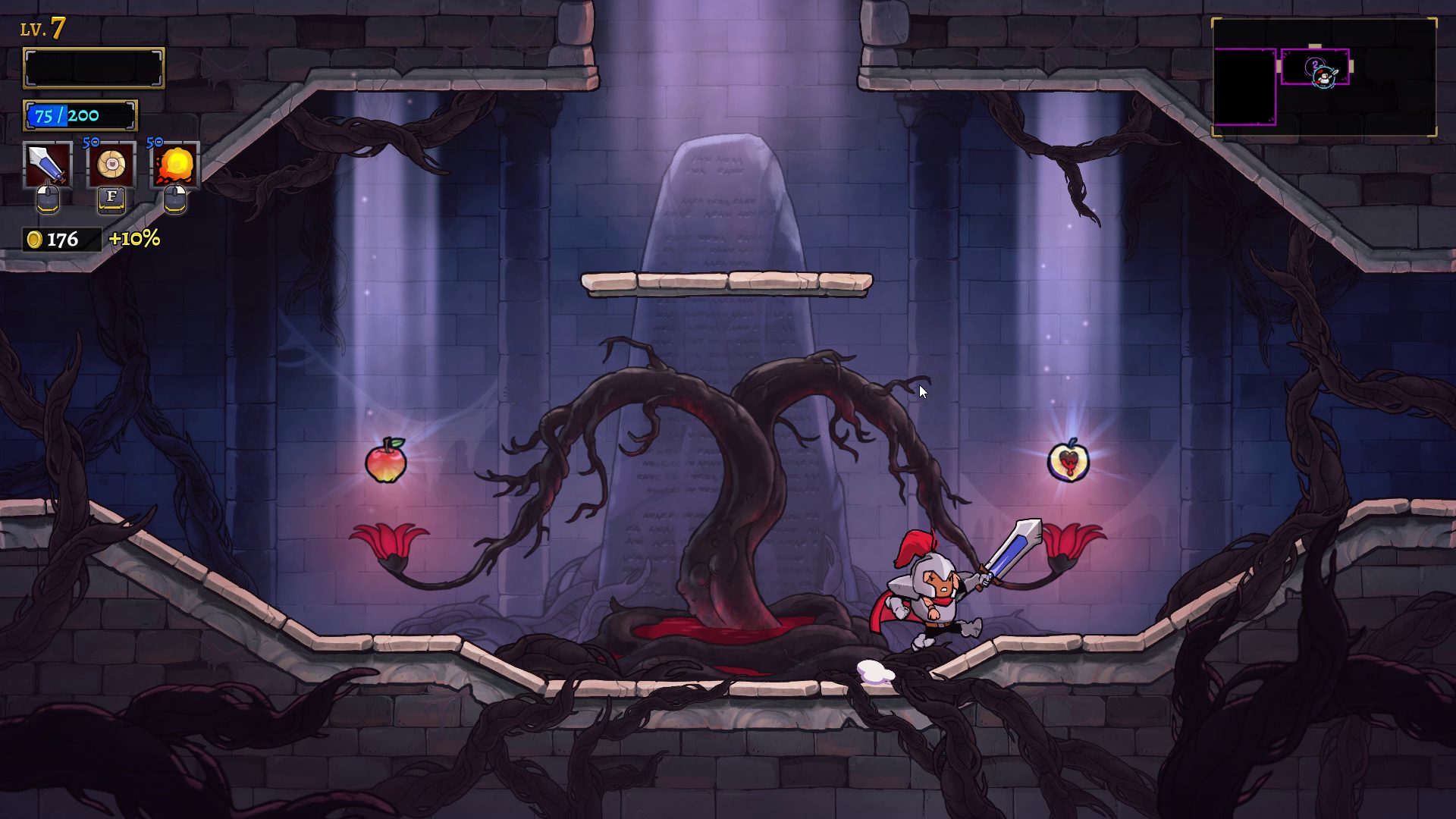

Gold can be spent after you die to unlock upgrades and permanent buffs that persist across descendants. As you clear the castle and slay enemies, open chests, collect new swords/armor and ability enhancing runes, complete challenges, and even partake in a depressed jester’s games (yes, you read that correctly), you gain gold. Thankfully, there are some progression systems that stay intact across deaths. The fact that traits can be either positive or negative means you’re often forced to weigh the strengths and weaknesses of your options, which adds an extra layer of strategy to the experience. There’s a total of 37 traits to discover and learning what each one does is one of the most fun aspects of the game.

Dementia causes your character to see enemies that aren’t there, Savant randomly changes your spells after every cast, Vertigo flips the screen upside down, and Hypergonadism allows you to send enemies flying with each hit. makes your character fart, while Nostalgic gives the game a sepia toned filter with a grainy overlay) but most of them have a significant impact on gameplay. Some of these traits are simply for novelty’s sake (I.B.S. However, the character generation doesn’t just end with classes, there’s also a wide array of unique traits that serve as both positive and negative gameplay modifiers. With classes such as Paladin, Ninja, Spellsword, Assassin, and more, there’s a decent number of options on hand.

From blistering fireballs flung across the screen, to powerful spear thrusts from suits of armor, and even the deadly fangs of speedy wolves, there’s a never-ending barrage of danger to look out for, which is where the genius of Rogue Legacy’s descendant system comes into play.Īfter your first character dies (which is scripted), you’re given the choice of one of three randomly generated heroes. Rogue Legacy plays like a tribute to the 2D side-scroller classics of yesteryear (most notably Castlevania), and that retro difficulty is prevalent throughout. The skeletons, knights, wizards, and scores of other enemy types that populate the different zones in this game are ferociously difficult and can kill you in seconds if you aren’t on the top of your game. By the end of the game, I had died nearly 250 times and muttered more than a few choice words under my breath. Each new descendant is given a random class and an assortment of traits and equipment to differentiate themselves from one another and learning how they all work is paramount to survival.īefore going any further, it’s important to know that Rogue Legacy is extremely difficult. Death is inevitable in this game, and instead of simply going back to a checkpoint or losing a life, each character’s death is permanent and forces you to move on to the next descendant in the family tree. It’s a deceptively old-school premise, but thanks to an incredibly unique “descendant” mechanic, there’s some surprisingly modern blood in these veins. Your goal in Rogue Legacy is simple: clear a randomly generated castle and its accompanying areas (a forest, tower, and dungeon) to earn the keys to open a giant golden door in the main hall and take on the final boss. Like an intense bout of puppy love, Rogue Legacy has consumed my every waking moment and I’ve now finally seen it through to completion. Thankfully, that’s all changed over the past two weeks.
#Rogue legacy equipment full
Between getting sidetracked with other games, moving to different locations, and other random life events I’m probably forgetting, my relationship with Rogue Legacy has been full of flirtation, but not commitment. It’s one of those odd games I’ve picked up and put down countless times over the years, but somehow never stuck with long enough to finish. I have a long, unusually complicated history with Rogue Legacy. Available On: PC, Nintendo Switch, PS3, PS4, PS Vita, and Xbox One


 0 kommentar(er)
0 kommentar(er)
